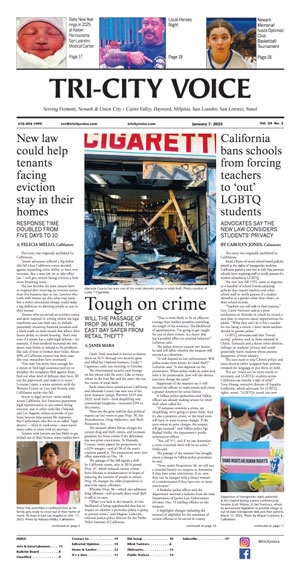[et_pb_section bb_built=”1″ _builder_version=”3.22″][et_pb_row _builder_version=”3.25″ background_size=”initial” background_position=”top_left” background_repeat=”repeat”][et_pb_column type=”4_4″ _builder_version=”3.0.47″ custom_padding=”|||” custom_padding__hover=”|||”][et_pb_image src=”http://tricityvoice.com/wp-content/uploads/2011/10/TCV-Search.png” align=”center” force_fullwidth=”on” align_tablet=”center” align_last_edited=”on|desktop” _builder_version=”4.5.3″ animation_style=”fade” box_shadow_style=”preset3″ vertical_offset_tablet=”0″ horizontal_offset_tablet=”0″ z_index_tablet=”0″]
[/et_pb_image][et_pb_divider divider_weight=”4″ _builder_version=”3.14″ height=”0px”]
[/et_pb_divider][et_pb_text _builder_version=”4.9.10″ z_index_tablet=”500″ hover_enabled=”0″ text_text_shadow_horizontal_length_tablet=”0px” text_text_shadow_vertical_length_tablet=”0px” text_text_shadow_blur_strength_tablet=”1px” link_text_shadow_horizontal_length_tablet=”0px” link_text_shadow_vertical_length_tablet=”0px” link_text_shadow_blur_strength_tablet=”1px” ul_text_shadow_horizontal_length_tablet=”0px” ul_text_shadow_vertical_length_tablet=”0px” ul_text_shadow_blur_strength_tablet=”1px” ol_text_shadow_horizontal_length_tablet=”0px” ol_text_shadow_vertical_length_tablet=”0px” ol_text_shadow_blur_strength_tablet=”1px” quote_text_shadow_horizontal_length_tablet=”0px” quote_text_shadow_vertical_length_tablet=”0px” quote_text_shadow_blur_strength_tablet=”1px” header_text_shadow_horizontal_length_tablet=”0px” header_text_shadow_vertical_length_tablet=”0px” header_text_shadow_blur_strength_tablet=”1px” header_2_text_shadow_horizontal_length_tablet=”0px” header_2_text_shadow_vertical_length_tablet=”0px” header_2_text_shadow_blur_strength_tablet=”1px” header_3_text_shadow_horizontal_length_tablet=”0px” header_3_text_shadow_vertical_length_tablet=”0px” header_3_text_shadow_blur_strength_tablet=”1px” header_4_text_shadow_horizontal_length_tablet=”0px” header_4_text_shadow_vertical_length_tablet=”0px” header_4_text_shadow_blur_strength_tablet=”1px” header_5_text_shadow_horizontal_length_tablet=”0px” header_5_text_shadow_vertical_length_tablet=”0px” header_5_text_shadow_blur_strength_tablet=”1px” header_6_text_shadow_horizontal_length_tablet=”0px” header_6_text_shadow_vertical_length_tablet=”0px” header_6_text_shadow_blur_strength_tablet=”1px” box_shadow_horizontal_tablet=”0px” box_shadow_vertical_tablet=”0px” box_shadow_blur_tablet=”40px” box_shadow_spread_tablet=”0px” text_text_shadow_horizontal_length=”text_text_shadow_style,%91object Object%93″ text_text_shadow_vertical_length=”text_text_shadow_style,%91object Object%93″ text_text_shadow_blur_strength=”text_text_shadow_style,%91object Object%93″ link_text_shadow_horizontal_length=”link_text_shadow_style,%91object Object%93″ link_text_shadow_vertical_length=”link_text_shadow_style,%91object Object%93″ link_text_shadow_blur_strength=”link_text_shadow_style,%91object Object%93″ ul_text_shadow_horizontal_length=”ul_text_shadow_style,%91object Object%93″ ul_text_shadow_vertical_length=”ul_text_shadow_style,%91object Object%93″ ul_text_shadow_blur_strength=”ul_text_shadow_style,%91object Object%93″ ol_text_shadow_horizontal_length=”ol_text_shadow_style,%91object Object%93″ ol_text_shadow_vertical_length=”ol_text_shadow_style,%91object Object%93″ ol_text_shadow_blur_strength=”ol_text_shadow_style,%91object Object%93″ quote_text_shadow_horizontal_length=”quote_text_shadow_style,%91object Object%93″ quote_text_shadow_vertical_length=”quote_text_shadow_style,%91object Object%93″ quote_text_shadow_blur_strength=”quote_text_shadow_style,%91object Object%93″ header_text_shadow_horizontal_length=”header_text_shadow_style,%91object Object%93″ header_text_shadow_vertical_length=”header_text_shadow_style,%91object Object%93″ header_text_shadow_blur_strength=”header_text_shadow_style,%91object Object%93″ header_2_text_shadow_horizontal_length=”header_2_text_shadow_style,%91object Object%93″ header_2_text_shadow_vertical_length=”header_2_text_shadow_style,%91object Object%93″ header_2_text_shadow_blur_strength=”header_2_text_shadow_style,%91object Object%93″ header_3_text_shadow_horizontal_length=”header_3_text_shadow_style,%91object Object%93″ header_3_text_shadow_vertical_length=”header_3_text_shadow_style,%91object Object%93″ header_3_text_shadow_blur_strength=”header_3_text_shadow_style,%91object Object%93″ header_4_text_shadow_horizontal_length=”header_4_text_shadow_style,%91object Object%93″ header_4_text_shadow_vertical_length=”header_4_text_shadow_style,%91object Object%93″ header_4_text_shadow_blur_strength=”header_4_text_shadow_style,%91object Object%93″ header_5_text_shadow_horizontal_length=”header_5_text_shadow_style,%91object Object%93″ header_5_text_shadow_vertical_length=”header_5_text_shadow_style,%91object Object%93″ header_5_text_shadow_blur_strength=”header_5_text_shadow_style,%91object Object%93″ header_6_text_shadow_horizontal_length=”header_6_text_shadow_style,%91object Object%93″ header_6_text_shadow_vertical_length=”header_6_text_shadow_style,%91object Object%93″ header_6_text_shadow_blur_strength=”header_6_text_shadow_style,%91object Object%93″ vertical_offset_tablet=”0″ horizontal_offset_tablet=”0″]
Fremont is about to undergo its first review of district boundaries that took place beginning with the 2018 election. Following an official U.S. Census, every 10 years, boundaries are examined and modified to align with current residency. In the process, beside the number of residents, other factors such as ethnicity, impact on nearby neighborhoods and “communities of interest” are to be considered.
During the initial boundary construction, politics entered the fray since prior council seats were elected at-large and the possibility of sitting councilmembers occupying the same district was a determining factor. This resulted in a bit of gerrymandering to accommodate such a conflict. What happens in this round will, hopefully, avoid such behavior and result in districts that accurately reflect neighborhood cohesiveness. However, the same problem may arise since heavily concentrated developments can skew results. In cases where no geologic or geographic boundary exists, the span of a street can make a difference.
As population grows from apartment/condominium complexes concentrating in specific areas such as Centerville, Irvington and Warm Springs, and future developments slated for Niles, Irvington, Downtown and Mission San Jose as well, will new boundaries account for this or simply divide the city using numbers that will soon lose relevance? The same can be said for retail and commercial activity, especially following a devastating pandemic.
Public hearings and meetings will be scheduled to reflect public sentiment toward boundary lines and define neighborhoods. This is a once-in-a-decade opportunity to affect the outcome of the redistricting process. It is only through active and sustained interest that your interests can be included in the final result. The deadline to adopt a final district map is April 17, 2022, so the process will proceed rapidly. Since census data has been delayed until August 16th, the timeframe to identify and modify new boundaries will accelerate thereafter.
In the past, some criticism has been leveled at the at-large process of electing councilmembers, favoring densely populated areas… more people equal more votes and greater representation. District representation attempts to limit this imbalance. While not a prefect system, it does allow those with smaller budgets to address the needs of their neighbors. The problem of balkanization can arise if each district representative addresses issues from a purely selfish perspective, but this can be monitored and hopefully overcome. A key element to the success of this system is input from residents prior to boundary determination. Also, if future population shifts are imminent, their impact should also be a determining factor.
For more information and to keep current on the process, visit www.redistrictfremont.org
[/et_pb_text][/et_pb_column][/et_pb_row][/et_pb_section]



